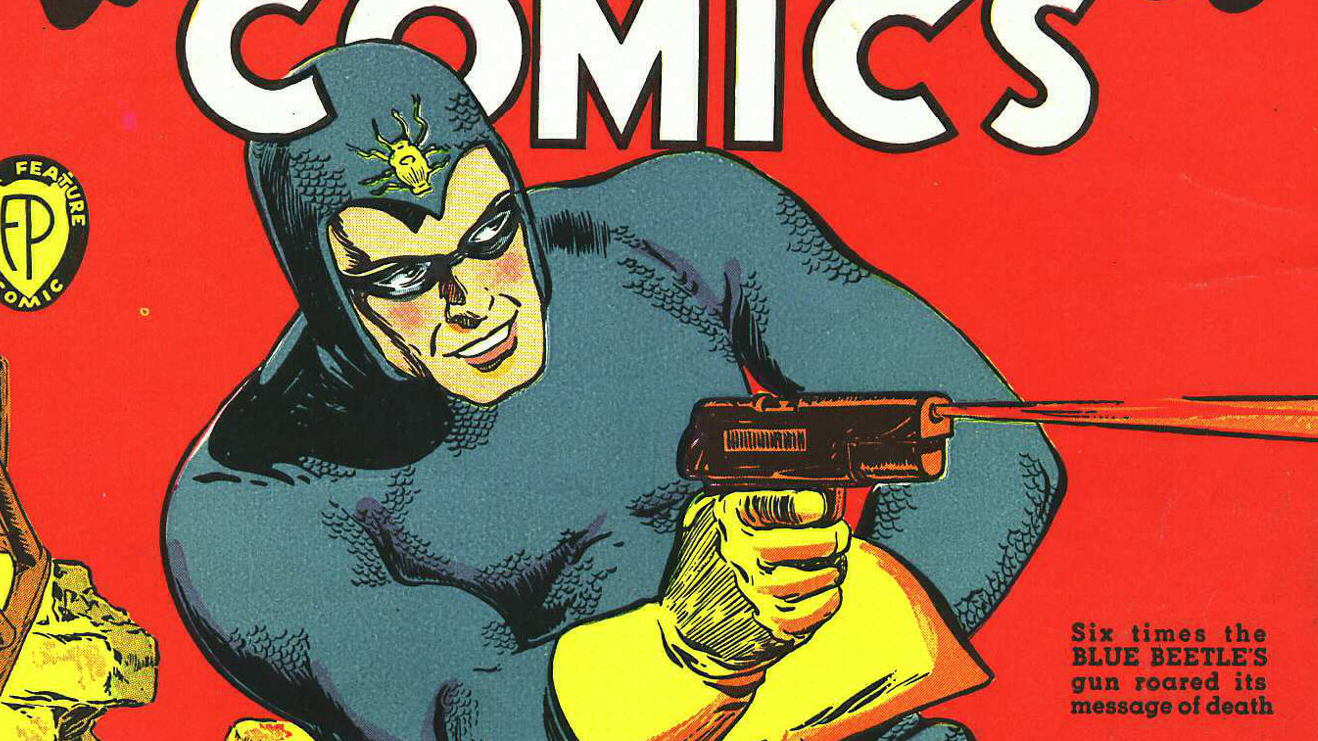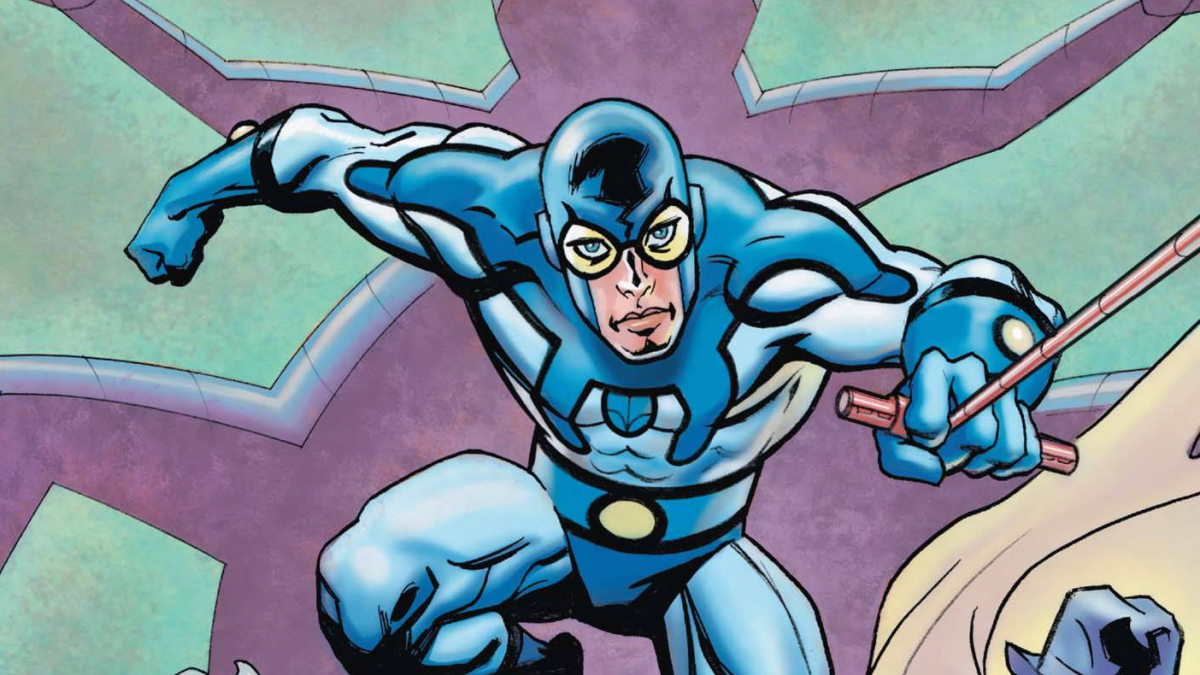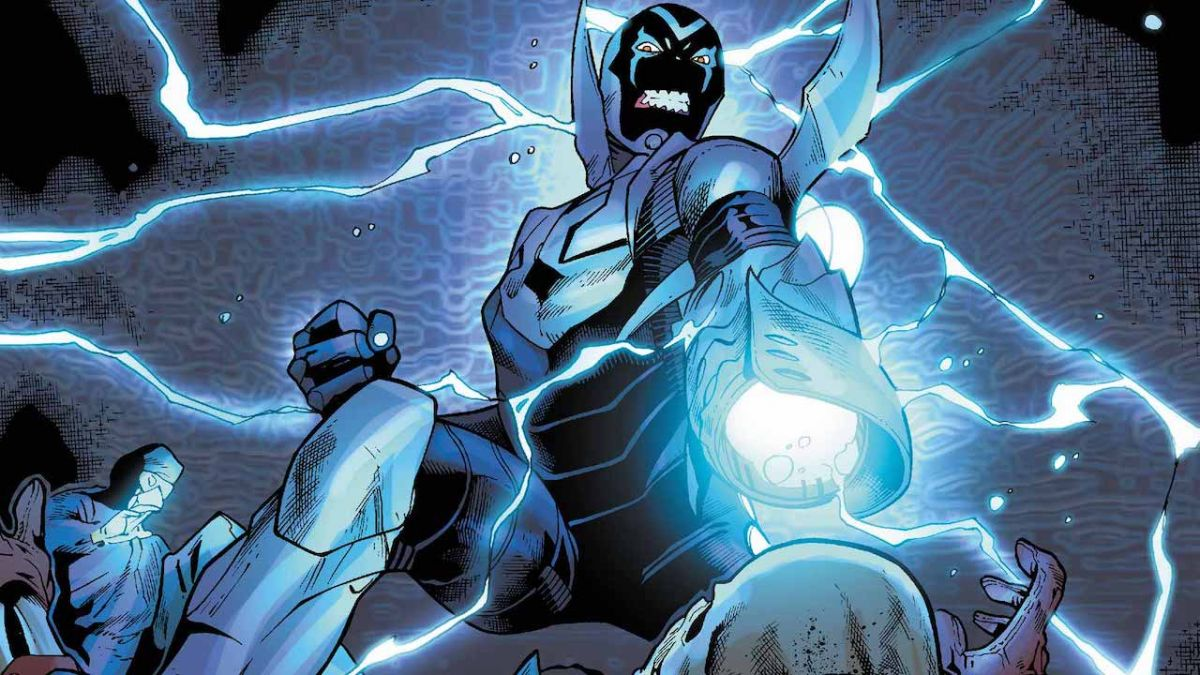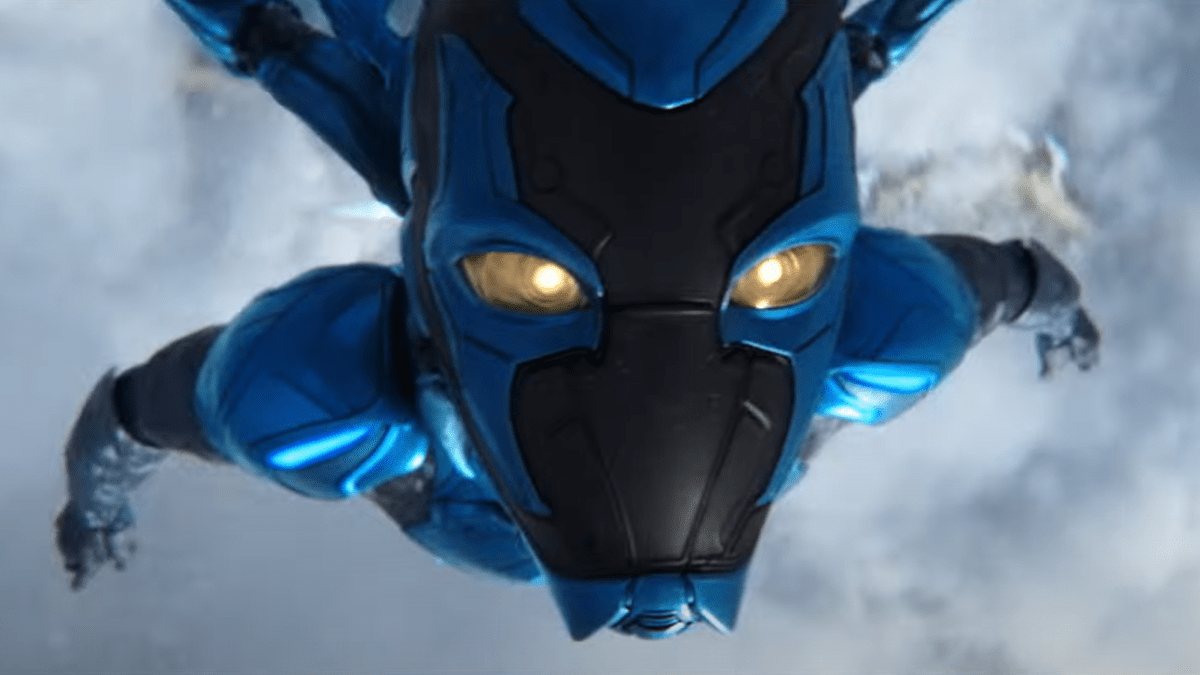Of all the characters on DC’s roster of theoretically recognizable heroes, no other character can get seasoned comic book nerds to make a vague “oh yeah, definitely” noise before trying to change the subject quite the same way that Blue Beetle can.
Variations of the superhero have been kicking around since back when cigarettes were still considered a healthy snack, but he never quite broke through to mainstream audiences in a way that made him anyone’s first choice to star in a movie over a 20-year period where every movie was about superheroes. He is, if nothing else, a very particular addition to comic book history. If you want to know more about Blue Beetle, then you came to the right place.
Blue Beetle No. 1: Take Your Vitamins, Kids, and You Can Shoot Folks, Too

The world of DC Comics has always stood in direct defiance of the assertion that there are no second acts in America. “If at first you don’t succeed, name a different character The Flash and hope that one takes off;” that’s their motto.
Blue Beetle stands as a testament to the efficacy of this narrative approach. His first appearance came in 1939, in the pages of Fox’s Mystery Men Comics, sadly unaffiliated with the super team that would go on to fight the concept of disco in the 1999 movie. Who came up with him is a matter of debate — lots of writers and artists used pseudonyms back in the day, so that they wouldn’t be associated with something as immature and flash-in-the-pan as superheroes. Just ask Stanley Lieber — but there’s an argument to be made that he was the brainchild of The Spirit creator Will Eisner.
A police officer named Dan Garret, this original Blue Beetle didn’t have a beetle and was barely blue, but the original Green Lantern’s costume was a red sweatshirt and a Dracula cape. These things take time. Lighten up.
Garret (later Garrett) achieved his great strength and resilience through the ingestion of vitamins, which is about the most adorably “oh, honey” mid-20th century superheroic thing you’ll read today, after the fact that the Human Torch used to wear pajamas made out of asbestos.
When the original Blue Beetle publisher went under, the character wound up as a part of the Charlton Comics stable of heroes, the same school of super-folk that gave readers other future loveable DC B-listers like The Question, The Atom, and Peacemaker. In 1964, the character was reimagined as a guy who wasn’t fighting crime with the help of B12 injections. Instead, he was now a teacher and archaeologist, granted astonishing abilities like flight, strength, and blasty things by a magical Egyptian scarab. A lot of people were getting powers from magical Egyptian stuff in those days. The whole thing had a very tongue-in-cheek, Adam West Batman feel, and the new look lasted a little less than two years.
Blue Beetle No. 2: Striking a Kord

You don’t just take a catchy moniker like “Blue Beetle” and throw it away just because nobody’s buying his comics anymore. By the end of 1966, Charlton had introduced a new character to take up the mantle: Theodore “Ted” Kord, a very clever young man who was later revealed to be an old student of the first Blue Beetle. An inventor and adventurer, he was more of a classic-era Moon Knight than an intergalactic CGI crime-fighting cyborg. He had a magnificent flying machine, but he was a punching and kicking kind of vigilante, almost entirely absent a sense of pharaoh-based superhumanity.
Charlton Comics was swallowed up by DC, and Kord joined the Justice League International. This Blue Beetle would go on to make besties with the time-traveling ego dynamo Booster Gold, leading to one of the most memorable on-panel friendships of the ‘80s thanks to the writing of Kraven’s Last Hunt’s J.M. DeMatteis and Ambush Bug’s own Keith Giffen. The good times couldn’t last forever, though, and in 2005, Kord bravely sacrificed himself to move the plot of a Maxwell Lord story forward. He came back as a zombie for a minute. Pretty standard stuff. Next!
Blue Beetle No. 3: or, The Dazzling Foresight to Be Visually Interesting On Screen

In 2006, Giffen and co-creators Cully Hammer and John Rogers gave readers an all-new, all-different Blue Beetle, this time in the form of Jaime Reyes. Anyone planning to see the Blue Beetle movie in theaters, this is where both of you come in.
Remember that magical scarab thing that gave the first Blue Beetle his powers? Not the first first Blue Beetle, the second first Blue Beetle. The one whose fingers got sticky on archaeological digs. Funny story: It turns out that it was actually an alien artifact of immense power, going by the name of Khaji Da. That sort of thing was happening to a lot of magical Egyptian stuff in those days. In a hefty wad of retconning, the suit had its backstory filled in – It was a sentient living weapon, created by an ancient race of jerks called The Reach. Their usual game plan was to drop a scarab on a civilization, let it take over a host, and then wait for the host to take control of the planet. This time around, however, the suit just kind of helped out around the place, aiding an ancient Egyptian king with his reign before taking a nap for a few thousand years.
After a dramatic explosion involving the Wizard that Shazam is always hanging out with, the scarab boot-scooted over to El Paso and fused itself to young Jaime Reyes at the beginning of the 21st century. Things started out decidedly Greatest American Hero-y for Reyes, who had a tough time controlling the unsettlingly alive-seeming techno-organic space armor that came part and parcel with the scarab. It would power itself up when its host was in danger and then slorp back up his spine when the danger passed, but besides that, it was sort of a crapshoot. On paper, it could do all sorts of cool stuff – fly, manifest gizmos and weapons, and even stop your boy Jaime from needing to go to the bathroom. Superpowers are a mixed bag.
In short: Blue Beetle is Venom, meets Green Lantern, meets one of the Iron Man suits from around Infinity War. Also, he’s blue.

